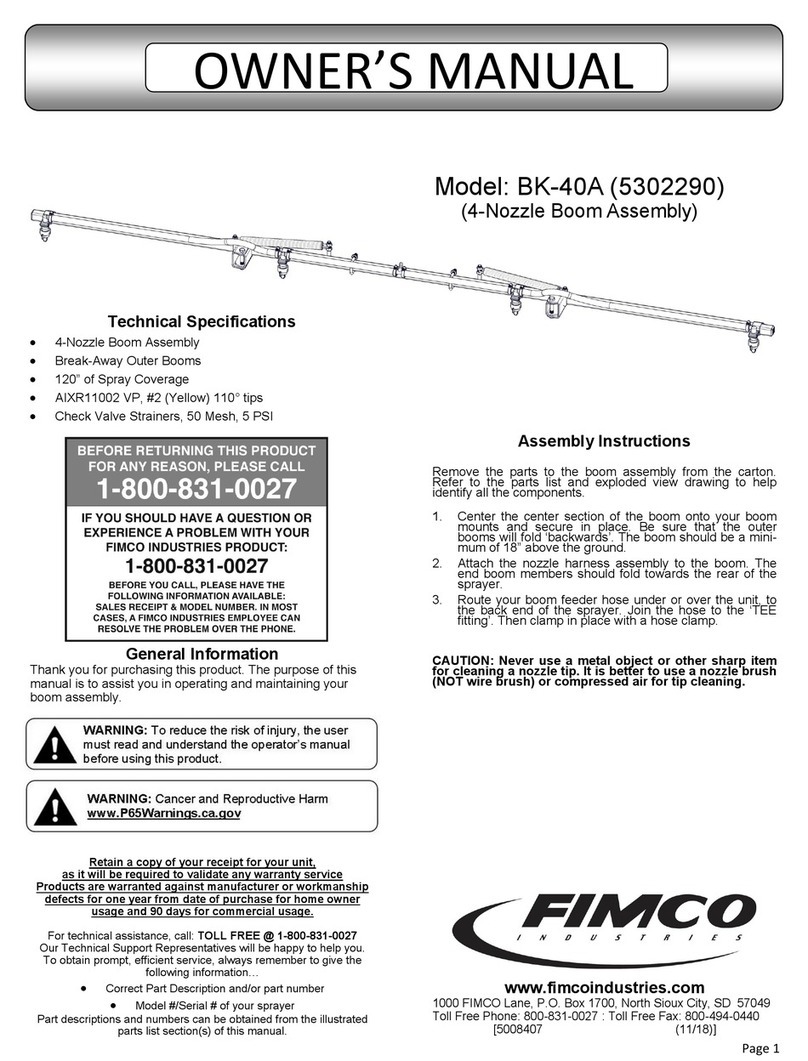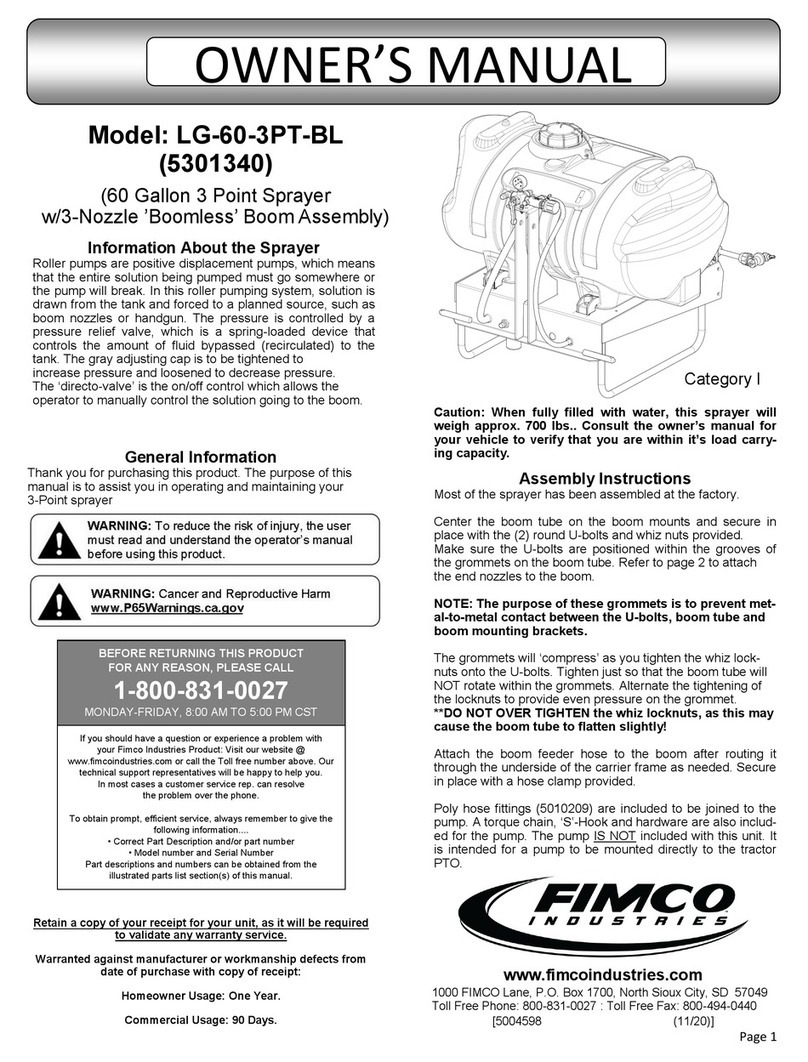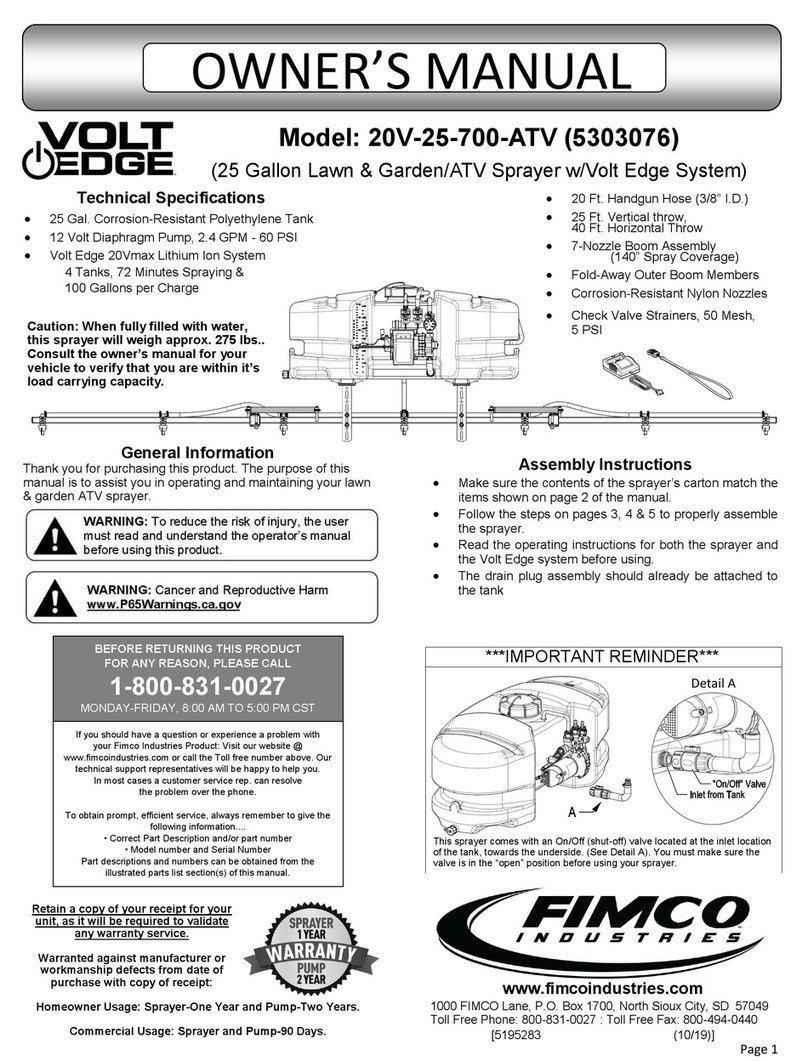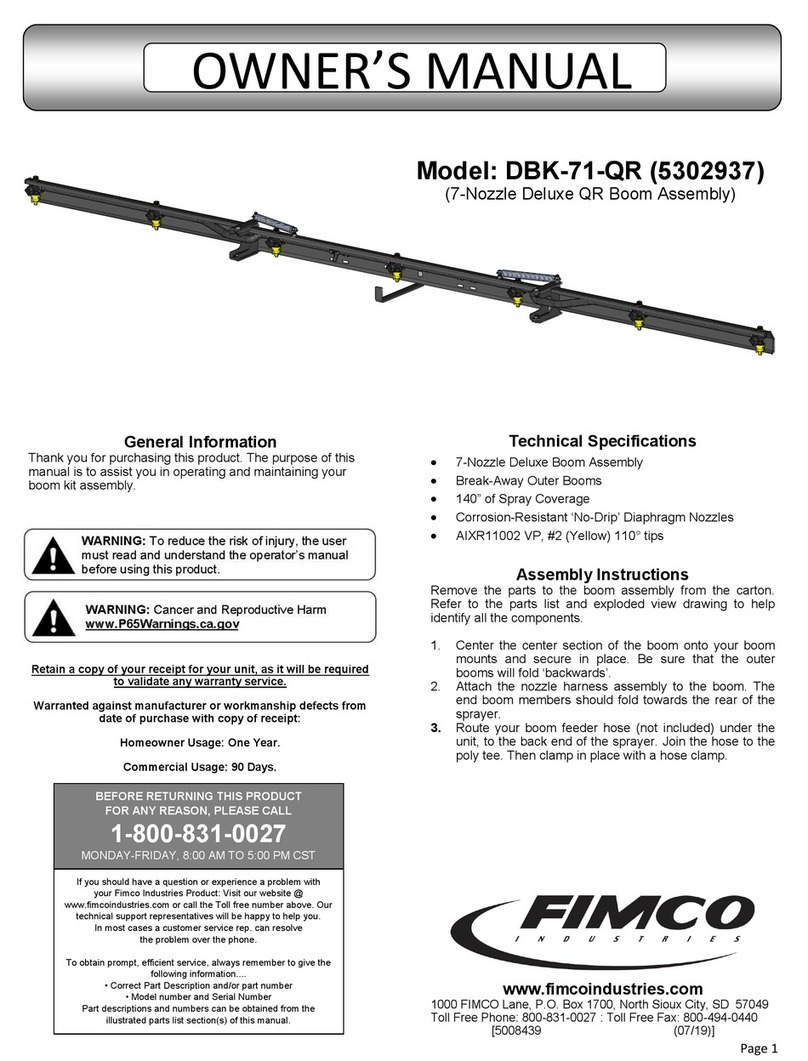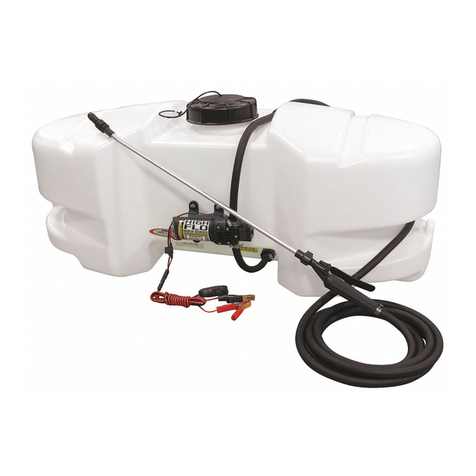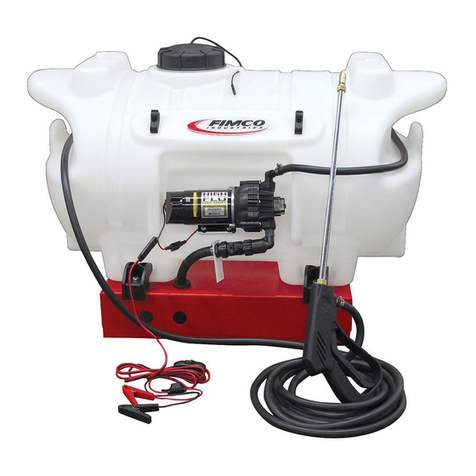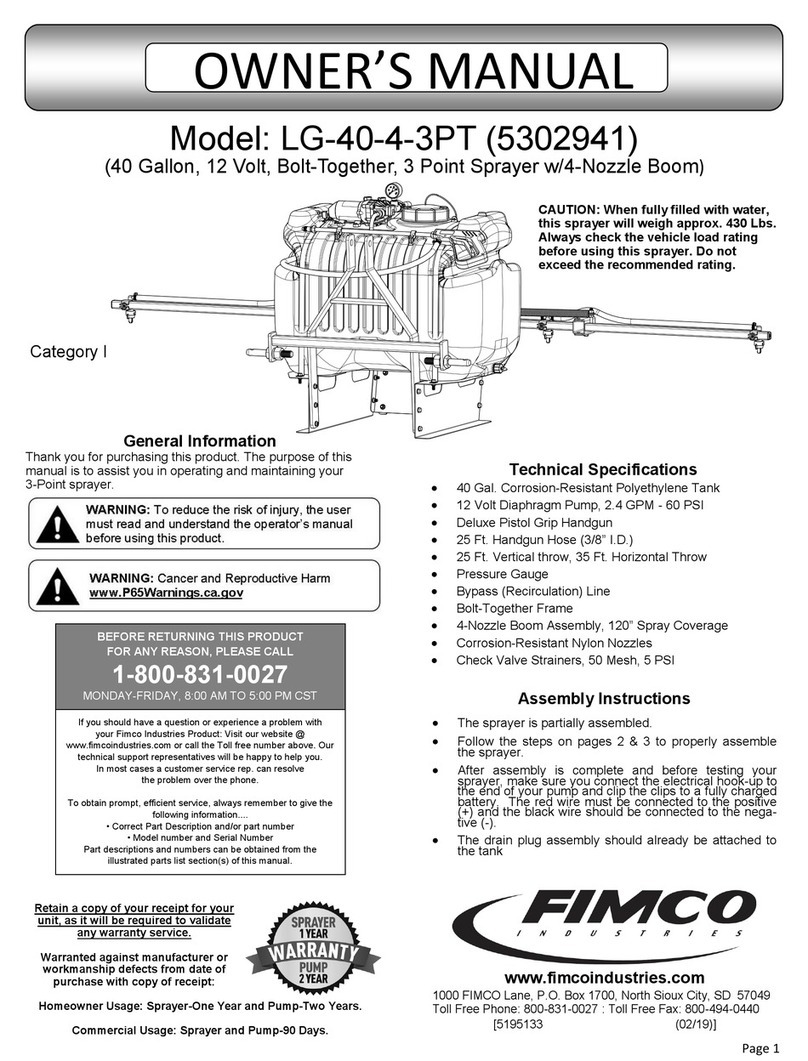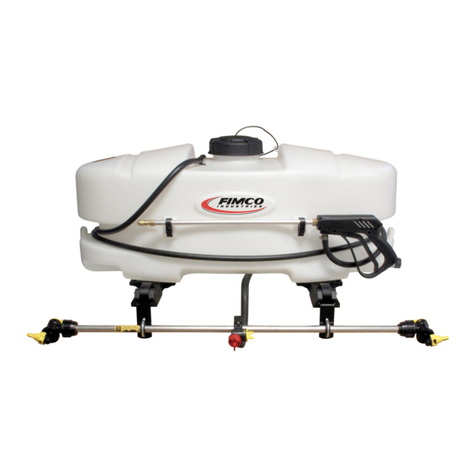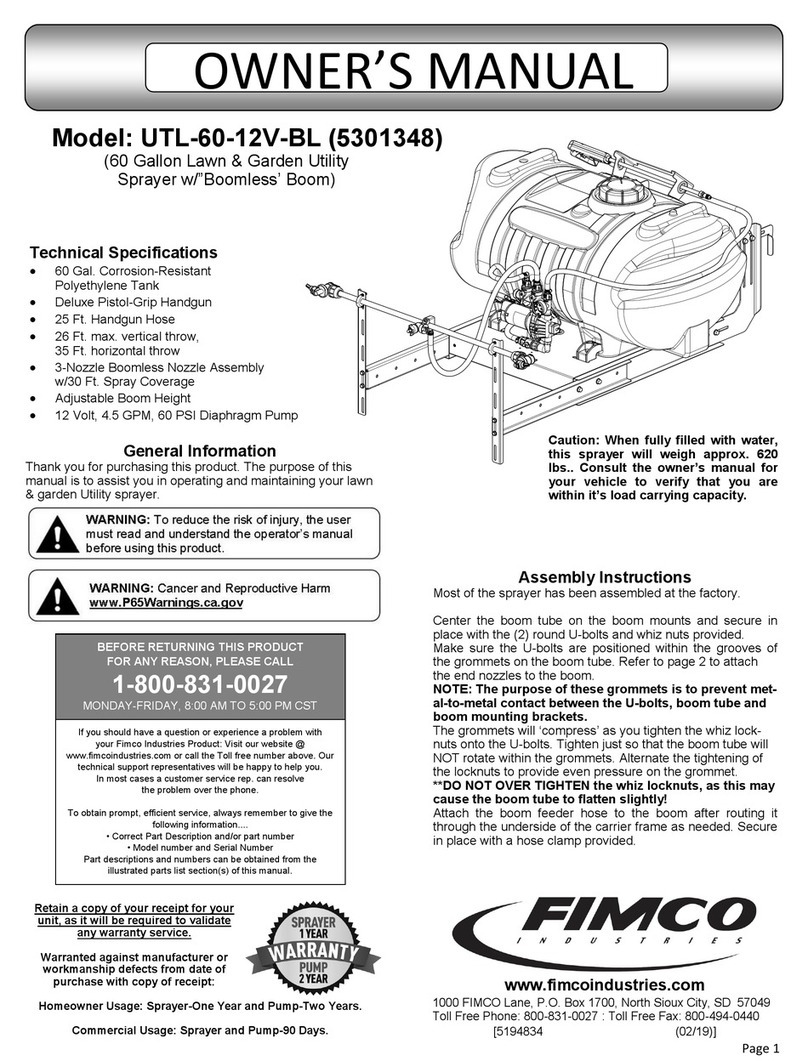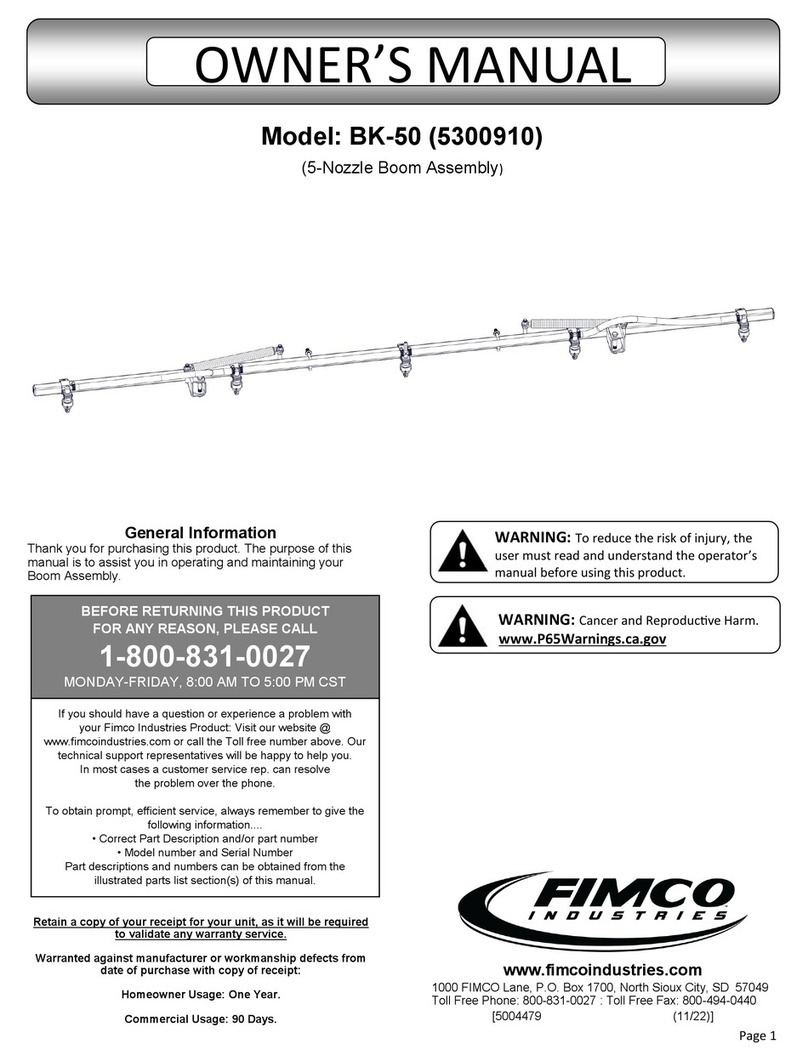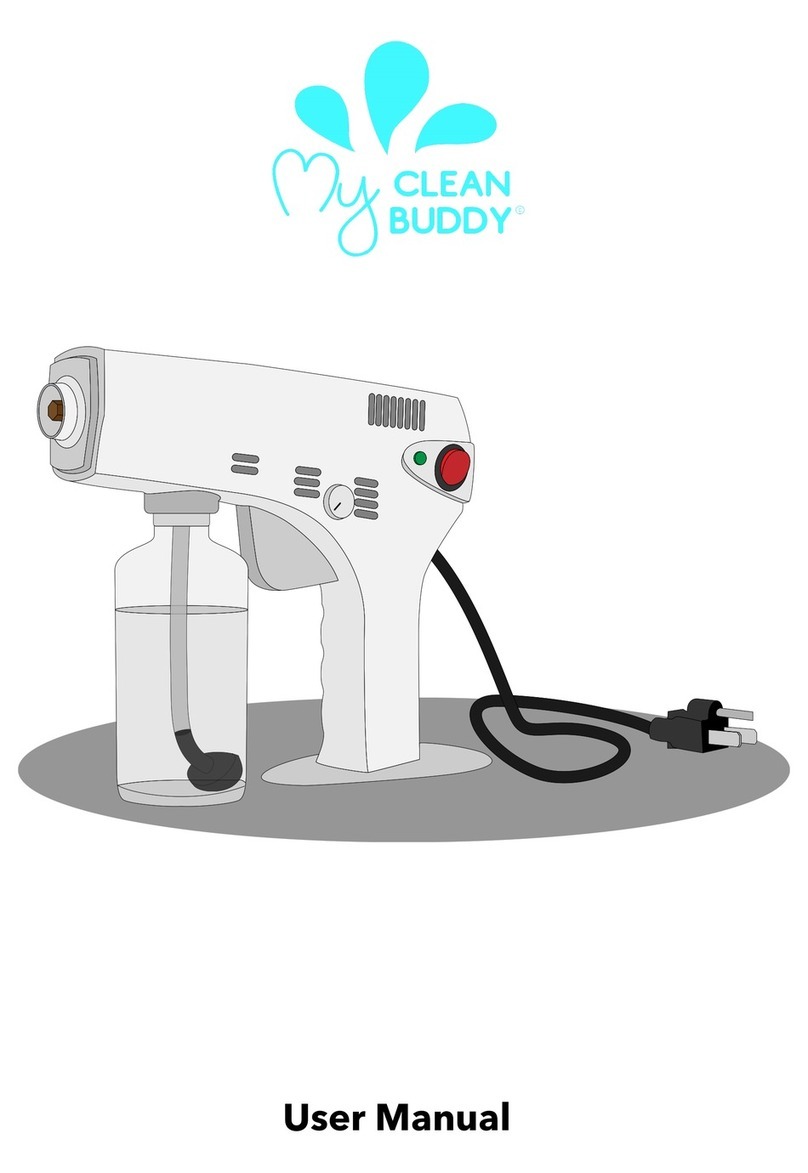
Page 2
Testing the Sprayer
NOTE: It is VERY important for to test your sprayer with plain water
before actual spraying is attempted. This will enable you to check for
leaks without the possibility of losing any expensive chemicals.
Fill the tank about 1/2 full with plain water. When you are ready to
spray, turn the boom valve to the “on” position. This will start solution
spraying from the tips of the boom. The pressure will decrease slightly
when the boom is spraying. Adjust the pressure by turning the “ON/
OFF” valve lever on the bypass line valve. Make sure your pattern is
sufficient. You may down-pressure the system by ‘bypassing’ solution
back into the tank. This is achieved by opening the bypass valve.
Regulating pressure is done in this manner.
Read the operating instructions and initially begin spraying by closing
the ‘bypass’ valve and opening the boom line valve. This will enable
the air in the line to be eliminated (purged) through all the tips, while
building pressure. When everything tests all right (no leaks and good
pressure), add the desired chemicals to the mixture and water
combination and start your spraying operation.
Conditions of weather and terrain must be considered when setting the
sprayer. Do not spray on windy days. Protective clothing must be worn
in some cases
Be sure to read the chemical label(s) before application!
Calibration
Chemical labels may show application rates in gallons per acre,
gallons per 1000 square feet or gallons per 100 square feet. You will
note that the tip chart on the cover shows 2 of these rating systems.
Once you know how much you are going to spray, then determine
(from the tip chart) the spraying pressure (PSI), and the spraying speed
(MPH).
Determining the proper speed of the pulling vehicle can be done by
marking off 100, 200 & 300 feet. The speed chart indicates the number
of seconds it takes to travel the distances. Set the throttle and with a
running start, travel the distances. Adjust the throttle until you travel the
distances in the number of seconds indicated by the speed chart. Once
you have reached the throttle setting needed, mark the throttle location
so you can stop and go again, returning to the same speed.
Add water and proper amount of chemical to the tank and drive to the
starting place for spraying.
Using the Boom Nozzles
Four things must be considered before spraying with the boom.
How much chemical must be mixed in the tank.
Rate of spray (gallons per acre to be sprayed).
What pressure (p.s.i.) will be used.
Speed traveled (mph) while spraying.
Refer to the chemical label to determine your chemical mixture
See the tip chart to determine the pressure to be used. The chart
will also show the speed used when spraying.
Start the pump and open the valve to the boom nozzles.
Check the spray pattern. Usually you can see the coverage better
on a solid concrete surface, such as a driveway.
Raise or lower the nozzles so that you will have a good coverage
pattern. Generally the proper height will be about 18 inches from
the object(s) being sprayed.
Operation
Always fill the tank 1/2 full with water first and then add the chemical
slowly, mixing as you pour the chemical into the tank and then fill the
rest of the way. You may use the bypass in order to mix the chemical
and water.
The pumping system draws solution from the tank, through the
strainer/filter and to the pump. The pump forces the solution under
pressure to the handgun and/or boom nozzles.
Activate the handgun by squeezing the handle lever
Rotating the adjustable nozzle tip on the handgun will change the
tip pattern from a straight stream to a cone pattern (fine mist)
The nozzles on the boom will spray a 140 inch wide swath. However, it
is necessary to overlap patterns 30% to get proper coverage. The first
pass will only cover a 112 inch wide swath, but each pass thereafter
will provide a 140 inch swath of proper coverage. The proper nozzle
height should be a minimum of 18 inches above the object being
sprayed. Check the nozzle pattern by spraying water on a concrete
surface. Raise the boom to a higher mounting position to get more
spray pattern overlap, if desired.
Adjusting Pressure
When the bypass valve is closed, pressure is at the highest point.
Opening the valve will decrease pressure.
Maintenance During/After Spraying
After use, fill the sprayer tank part way with water. Start the sprayer
and allow the clear water to be pumped through the plumbing system
and out through the spray nozzles. Refill the tank about half full with
plain water and use FIMCO Tank Neutralizer and Cleaner and repeat
cleaning instructions above. Flush the entire sprayer with the
neutralizing/cleaning agent, then flush out one more time with plain
water. Follow the chemical manufacturer’s disposal instructions of all
wash or rinsing water. Remove the tips and screens from the nozzle
assemblies. Wash these items out thoroughly. Blow the orifice clean
and dry. If the orifice remains clogged, clean it with a fine bristle (NOT
WIRE) brush or with a toothpick. Do not damage the orifice. Water
rinse and dry the tips before storing.
WARNING: Some chemicals will damage the pump valves if allowed
to soak untreated for a length of time! ALWAYS flush the pump as
instructed after each use. DO NOT allow chemicals to sit in the pump
for extended times of idleness. Follow the chemical manufacturer’s
instructions on disposal of all waste water from the sprayer.
Winter Storage
Drain all water out of your sprayer, paying special attention to the
pump, handgun and valve(s). These items are especially prone to
damage from chemicals and freezing weather.
The sprayer should be winterized before storage by pumping a
solution of RV antifreeze through the entire plumbing system. This
antifreeze solution should remain in the plumbing system during the
winter months. When spring time comes and you are preparing your
sprayer for the spray season, rinse the entire plumbing system out,
clearing the lines of the antifreeze solution. Proper care and
maintenance will prolong the life of your sprayer.
1
MPH
2
MPH
3
MPH
4
MPH
5
MPH
6
MPH
8
MPH
15 .12 35.6 17.8 11.8 8.9 7.1 5.9 4.5 3.6
20 .14 41.6 20.8 13.8 10.4 8.3 6.9 5.2 4.2
30 .17 50.4 25.2 16.8 12.6 10.1 8.4 6.3 5.0
40 .20 59.6 29.8 19.8 14.9 11.9 9.9 7.4 5.9
1
MPH
2
MPH
3
MPH
4
MPH
5
MPH
6
MPH
8
MPH
8
MPH
15 .12 .41 .27 .20 .16
20 .14 .48 .32 .24 .19
30 .17 .58 .39 .29 .23
40 .20 .68 .45 .34 .27
Gallons Per 1000 Sq. Ft. - Based on Water
Spray Tip Rate Chart (20" Spacing)
Gallons Per Acre - Based on Water
Speed in M.P.H.
(Miles Per Hour)
Time Required in seconds to travel a distance of


